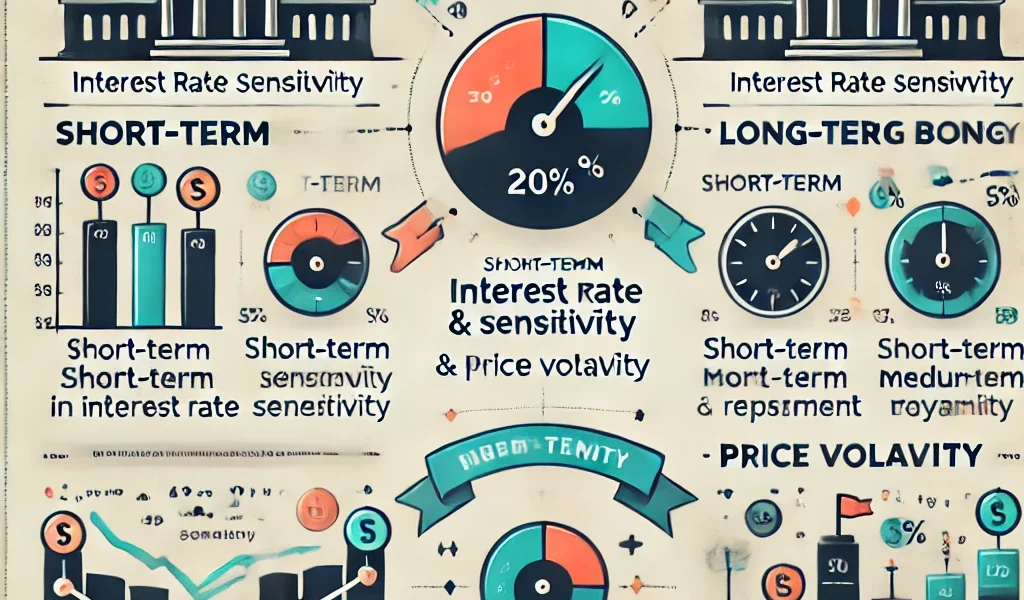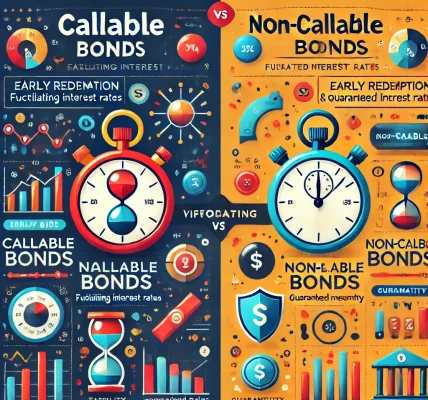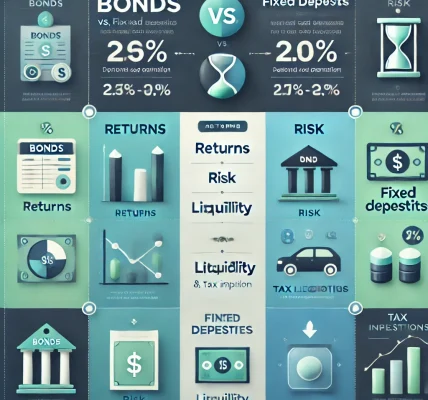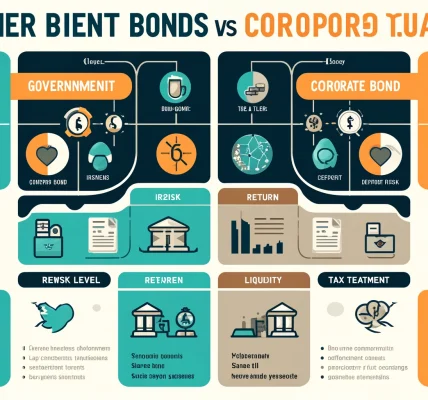Introduction
For bond investors, understanding the concepts of duration and maturity is critical for making informed investment decisions. While these terms are often used interchangeably, they have distinct meanings and implications. Maturity refers to the period until the bond’s principal is repaid, while duration measures a bond’s sensitivity to interest rate changes. Misunderstanding these concepts can lead to unexpected risks and reduced returns. This blog explains the key differences between duration and maturity, their impact on bond prices, and how investors can use this knowledge to optimize their portfolios.
🎯 What Is Bond Maturity?
Maturity is the period after which a bond’s principal amount (also known as the face value) is repaid to the investor.
✅ Fixed Timeline: Maturity is predefined and ranges from a few months to several decades.
✅ Interest Payments: Bondholders receive periodic interest payments (coupon payments) until the bond matures.
✅ Return of Principal: On the maturity date, the bond issuer repays the face value to the investor.
📊 Types of Bond Maturities
- Short-Term Bonds
- Maturity: Less than 3 years
- Lower risk, lower yield
- Suitable for conservative investors
- Medium-Term Bonds
- Maturity: 3 to 10 years
- Balanced risk and return
- Ideal for moderately risk-tolerant investors
- Long-Term Bonds
- Maturity: More than 10 years
- Higher risk due to interest rate changes
- Suitable for aggressive, long-term investors
🕒 What Is Bond Duration?
Duration is a measure of how sensitive a bond’s price is to changes in interest rates. It estimates the percentage change in a bond’s price for a 1% change in interest rates.
✅ Interest Rate Sensitivity: Duration indicates how much a bond’s price may increase or decrease due to rate changes.
✅ Time Factor: Longer duration bonds are more sensitive to rate fluctuations, while shorter duration bonds are less affected.
✅ Measure of Risk: Duration helps investors assess the risk associated with holding bonds in a volatile interest rate environment.
📚 Types of Duration
- Macaulay Duration
- Measures the weighted average time until a bond’s cash flows are received.
- Used to estimate interest rate sensitivity.
- Modified Duration
- Adjusts Macaulay duration to account for changes in yield.
- Shows the expected percentage change in bond price due to interest rate movements.
- Effective Duration
- Used for bonds with embedded options (callable/puttable bonds).
- Reflects how bond price changes due to rate shifts.
🔥 Key Differences Between Duration and Maturity
| Aspect | Duration | Maturity |
|---|---|---|
| Definition | Measures interest rate sensitivity | Time until bond repays principal |
| Purpose | Evaluates price volatility | Determines repayment timeline |
| Risk Indicator | Reflects risk of price fluctuation | Reflects timeline for repayment |
| Interest Rate Impact | Higher duration, higher sensitivity | Less sensitive to rate changes |
| Application | Used for portfolio risk management | Used to assess time horizon |
📈 Why Duration Matters More Than Maturity
Duration is a more accurate indicator of price sensitivity than maturity. A bond may have a long maturity but a relatively low duration, especially if it has high coupon payments that return capital faster. Understanding duration is essential for investors because:
✅ Predicts Price Changes: Duration estimates how much the bond price will fluctuate due to interest rate changes.
✅ Manages Interest Rate Risk: Investors can adjust bond duration to match their risk tolerance.
✅ Optimizes Portfolio Strategy: Bond duration helps align the portfolio with the investor’s investment horizon and market conditions.
📊 How Interest Rate Changes Impact Duration and Maturity
🔼 When Interest Rates Rise:
- Bond prices fall due to inverse relationship.
- Longer-duration bonds decline more in value compared to short-duration bonds.
- Maturity remains unaffected, but the bond price drops significantly if duration is high.
🔽 When Interest Rates Fall:
- Bond prices increase, benefiting long-duration bondholders.
- Short-duration bonds offer limited price appreciation.
Example:
- A bond with a 5-year maturity and a 3-year duration will see its price fall by approximately 3% if interest rates rise by 1%.
- A bond with a 10-year maturity and a 7-year duration will experience a 7% price drop under the same conditions.
🎯 How to Use Duration and Maturity to Build a Resilient Portfolio
- Match Duration with Investment Horizon
- Short-duration bonds for short-term goals.
- Longer-duration bonds for long-term income needs.
- Diversify Across Maturities
- Combine short-, medium-, and long-term bonds to mitigate interest rate risks.
- Adjust Duration Based on Market Conditions
- Reduce duration during rising rate environments.
- Increase duration when rates are expected to decline.
- Consider Bond Laddering
- Build a bond ladder to spread investments across various maturities.
- Enhances liquidity and reduces reinvestment risk.
🚨 Common Mistakes to Avoid
- Focusing Only on Maturity: Investors often ignore duration and focus solely on bond maturity, leading to unexpected losses.
- Ignoring Interest Rate Sensitivity: Long-duration bonds can experience steep price declines in a rising rate environment.
- Neglecting Portfolio Rebalancing: Failing to adjust bond duration over time increases exposure to interest rate risk.
📝 Legal Considerations for Bond Investments
To safeguard against legal risks:
✅ Regulatory Compliance: Ensure that bond investments comply with SEBI, SEC, or other local regulations.
✅ Disclosure of Risks: Clearly communicate interest rate sensitivity and duration risks to investors.
✅ Accurate Representation: Avoid misleading statements about bond performance or safety.
📚 Case Study: Duration vs. Maturity in Action
Scenario:
- Bond A: 10-year maturity, 7-year duration
- Bond B: 5-year maturity, 3-year duration
If interest rates rise by 1%, Bond A’s price will fall by ~7%, while Bond B’s price will drop only ~3%. Despite the longer maturity of Bond A, its high duration amplifies the price sensitivity, making it riskier in a rising interest rate environment.
🎉 Conclusion: Mastering Duration and Maturity for Bond Success
Understanding the differences between duration and maturity empowers bond investors to make informed decisions. While maturity defines the time horizon of a bond, duration determines how sensitive the bond is to interest rate changes. By carefully assessing both, investors can build a diversified, resilient bond portfolio that balances risk and returns effectively.




